Your phone should ring when pipes burst at 2 AM. But if you’re not showing up on Google, those emergency calls go to your competitors instead. Local SEO for plumbers isn’t optional anymore. It’s how homeowners find you when they need help fast.
This Blog shows you exactly how to rank higher in your service area. You’ll learn proven plumbing marketing strategies that drive more calls and book more jobs. No technical jargon. No confusing tactics. Just clear steps that work for plumbing businesses in 2025.
Think about how people find plumbers today. They no longer flip through phone books. They grab their phones and search for “plumber near me” or “emergency plumber in [city].”
Over 46% of all Google searches have local intent. That means nearly half of all searches are looking for businesses nearby. For plumbers, this number is even higher.
Plumber SEO has a direct impact on your bottom line. When you rank in the top three local results, you get more visibility. More visibility means more clicks. More clicks lead to more calls and booked appointments.
The plumbing industry is competitive in every city. Your competitors are investing in their online presence right now.
Local search results show up before paid ads. They appear with a map and business details. This prime real estate drives 76% of mobile searches to in-person visits within 24 hours. For emergency plumbing services, this timeline is even faster.
Here’s what proper plumbing business visibility gets you:
The homeowners searching for plumbers are ready to hire. They have a problem that needs fixing now. When you rank high locally, you become their solution. Your competitors who ignore SEO will lose these ready-to-buy customers every single day.
Read This Guide: How to Grow a Plumbing Business
Local SEO for plumbers rests on four main pillars. Each pillar supports your overall ranking power. Master all four to dominate your service area.
This pillar focuses on location-based signals. Your Google Business Profile is the foundation here. It tells Google where you operate and what services you offer. NAP consistency matters enormously. NAP stands for Name, Address, Phone number. These details must match everywhere online.
Customer reviews also fall under this pillar. They influence your ranking position and conversion rates. More positive reviews signal trustworthiness to both Google and potential customers.
Your website content needs optimization for search engines. This means creating dedicated service pages for each plumbing service. Each page should target specific keywords that customers actually search for. Meta titles and descriptions must be compelling and keyword-rich.
On-page SEO for plumbers includes optimizing images, headers, and internal links. Your content should answer customer questions directly. The goal is to help Google understand what your business does and where you serve.
This pillar builds your authority beyond your website. Citations are listings of your business on other websites. Getting listed on Angi, Yelp, Thumbtack, and local directories builds credibility. Backlinks from other local businesses strengthen your domain authority.
Off-page plumber SEO also includes partnerships and community involvement. When local organizations link to your plumbing website, Google sees you as a legitimate local business.
Your website’s technical foundation affects everything else. Site speed determines if visitors stay or leave immediately. Mobile responsiveness is critical since most searches happen on phones. Core Web Vitals measure user experience metrics that Google uses for ranking.
Technical SEO also covers site structure, security certificates, and crawlability. If search engines can’t properly access your site, your content won’t rank.

Your Google Business Profile is your most powerful local SEO tool. It’s free and directly controls your map pack visibility. The map pack shows the top three local businesses for relevant searches.
Start by claiming your profile if you haven’t already. Go to google.com/business and follow the verification process. Google will send a postcard with a verification code to your business address. This usually takes 5-7 days.
Once verified, fill out every single section completely:
Your business description should mention your services and locations naturally. Include plumbing company Google Business Profile relevant keywords without stuffing. Describe what makes your business different and why customers should choose you.
Add high-quality photos regularly. Upload pictures of your team, trucks, completed jobs, and office. Businesses with photos receive 42% more requests for directions. They also get 35% more clicks to their websites.
Use the services feature to list specific offerings. Add services like “drain cleaning,” “water heater repair,” “emergency plumbing,” and “pipe replacement.” Each service can have its own description.
Post updates weekly using the posts feature. Share seasonal tips, special offers, or recent project highlights. These posts show up in your profile and signal activity to Google.
Enable messaging so customers can text you directly. Quick responses improve your profile engagement metrics. Set up automatic replies for after-hours inquiries.
Monitor and respond to questions in the Q&A section. Customers can ask questions publicly on your profile. Answer promptly and thoroughly. You can also seed this section with common questions and detailed answers.
Review your insights monthly. Check how people find your listing, what actions they take, and where they’re searching from. This data helps you refine your strategy.
Read This Guide & Learn: How to Start a Plumbing Business
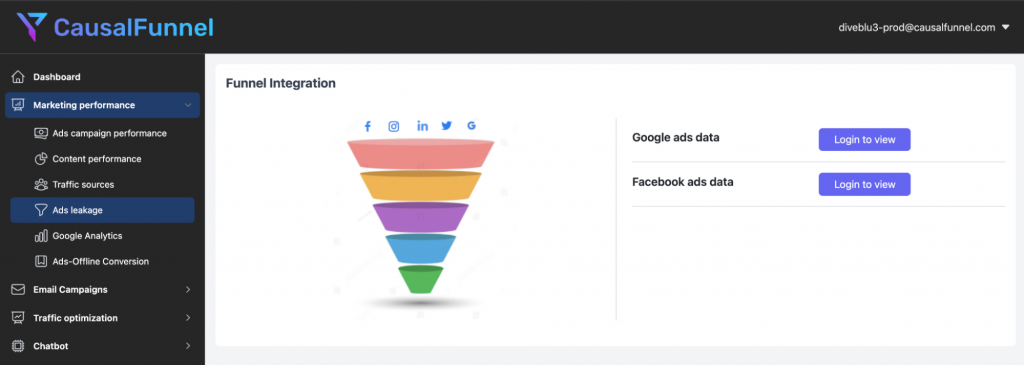
Tools like CausalFunnel’s Funnel Visualization can enhance this by providing live performance tracking of your customer journey.
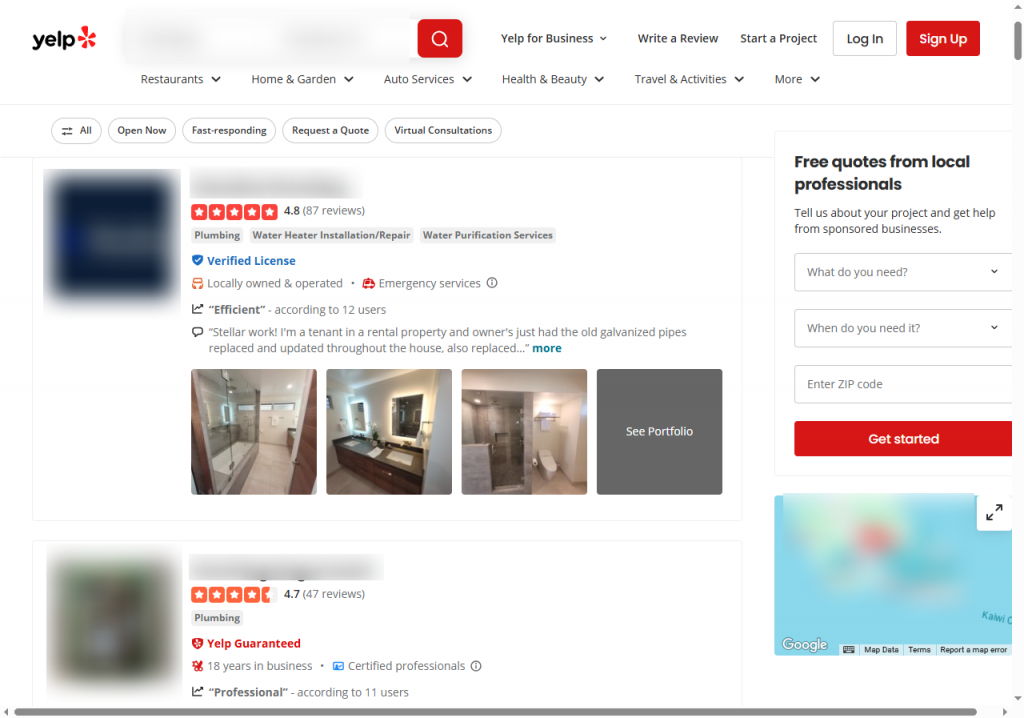
Citations are mentions of your business name, address, and phone number on other websites. They validate your business’s legitimacy to search engines. The more quality citations you have, the stronger your local presence becomes.
Citations should be accurate and consistent everywhere. Inconsistent information confuses Google and hurts your rankings. If your website says “123 Main Street” but directories say “123 Main St,” that’s an inconsistency.
Start with major directories that matter most:
Industry-specific directories carry extra weight. For plumbers, this includes the Plumbing-Heating-Cooling Contractors Association (PHCC) directory. Check if your state has a licensed plumber directory too.
Local chamber of commerce listings build geographic relevance. Join your local chamber and ensure you’re listed on their website. City business directories and community websites also provide valuable citations.
Use citation-building tools to streamline this process. BrightLocal helps you find citation opportunities and track existing ones. WhiteSpark provides citation-building services and consistency checks. Moz Local distributes your information to multiple directories at once.
Audit your current citations quarterly. Search for your business name plus city. Note any listings with incorrect information. Contact those sites to update the details. Some directories let you claim and edit your listing directly.
Create a citation spreadsheet to track everything. List each directory, your listing URL, username, and password. Document the exact NAP format you used. This prevents future inconsistencies when team members update listings.
Never use P.O. boxes as your address. Google prefers physical street addresses where customers can visit or where you operate from. If you’re home-based, check Google’s guidelines for service area businesses.
Also Read: Plumbing Marketing Strategies for New York
Online reviews directly impact your SEO and conversion rates. Reviews influence both rankings and customer decisions. Google considers review quantity, quality, and recency in its algorithm.
Businesses with higher ratings appear more prominently in local results. A one-star increase can lead to 5-9% revenue growth. Reviews also increase your click-through rate from search results. Customers trust businesses with authentic, recent reviews.
Create a systematic review collection process. Don’t leave reviews to chance. Build review requests into your workflow.
Ask customers at the right moment. The best time is right after completing a job successfully. Customer satisfaction is highest when their problem has just been solved. Send a review request within 24 hours while the positive experience is fresh.
Make it easy for customers to leave reviews. Send direct links to your Google Business Profile review page. You can find this link in your GBP dashboard under “Get more reviews.” Text messages work better than emails for review requests. Most people carry their phones everywhere.
Use this simple review request script:
“Hi [Customer Name], thanks for choosing [Your Company] for your plumbing needs. We’d love to hear about your experience. Could you take 60 seconds to leave us a review? [Insert Link]”
Respond to every review, positive and negative. Thank customers for positive reviews. Address negative reviews professionally and offer to resolve issues offline. Your responses show potential customers how you handle problems.
Never buy fake reviews or incentivize reviews with discounts. Google can detect fake reviews and may penalize your profile. Authentic reviews from real customers matter most.
Set up review monitoring alerts. Google sends notifications when you receive new reviews. Third-party tools like BirdEye or Podium can centralize reviews from multiple platforms.
Automate review requests using customer management software. Many CRM systems can trigger review requests after invoice payment. This removes manual work from your team.
Display your best reviews on your website. Add review schema markup so they can appear in search results. Star ratings in search results increase click-through rates significantly.
Your website is your digital storefront. It must be optimized for local plumbing keywords to rank well. Every page needs strategic optimization to attract local traffic.
Keyword research shows you what customers actually search for. Don’t guess at keywords. Use data to guide your content strategy.
Start with Google Keyword Planner. It’s free with a Google Ads account. Enter basic plumbing services to see search volumes and related keywords. Focus on keywords with commercial intent like “hire plumber [city]” or “emergency plumber near me.”

You can also do keyword research with CausalFunnel’s SEO Tools to find high-intent terms.
Create service pages for plumbing or home security lead generation offerings. Build location pages for each city, mentioning local landmarks. Add schema markup to clarify service areas.
A strong About page with licensing and testimonials boosts E-E-A-T (Experience, Expertise, Authoritativeness, Trustworthiness).
Write meta titles (under 60 characters) and descriptions (under 155 characters) with keywords and calls-to-action, e.g., “Need Security Leads in [city]? Call now for smart home solutions.”
Target location-specific keywords heavily. Use your city, neighborhood, and nearby areas in keyword combinations. “Plumber in [neighborhood]” or “[city] water heater repair” are examples.
Long-tail keywords convert better. “24-hour emergency plumber [city]” is more specific than “plumber.” These longer phrases indicate ready-to-hire customers. They also face less competition.
Create a keyword spreadsheet organized by service type. Group similar keywords together. This helps you plan which pages need which keywords. Don’t try to rank one page for everything.
Plumbing service pages need individual pages for each major service. Create separate pages for drain cleaning, water heater repair, pipe repair, and leak detection.
Each service page should target its own primary keyword. Include the keyword in the page title, first paragraph, and headers. Write 800-1200 words of useful content per page.
Structure your service pages consistently:
Build location pages for each city or area you serve. Don’t just list cities in a dropdown menu. Create full pages with unique content for each location. “[City] Plumbing Services” should have its own dedicated page.
Location pages should mention local landmarks and neighborhoods. Reference local issues common to that area. This helps Google understand your geographic relevance. It also resonates with local readers.
Make your coverage area obvious to both customers and search engines. Add a service area section to your homepage. List all cities, towns, and neighborhoods you cover.
Create a visual service area map. Show your coverage zone clearly. Tools like Google My Maps let you create custom maps. Embed this map on your website.
Add location schema markup to your code. This structured data tells search engines exactly where you operate. It can improve your visibility in local search results.
E-E-A-T stands for Experience, Expertise, Authoritativeness, and Trustworthiness. Google uses these signals to evaluate content quality.
Your About page should establish credibility. Include information about:
Add photos of your team and workspace. Put faces to names. This builds trust with potential customers. Include testimonials from satisfied customers directly on this page.
Link to your licensing verification where applicable. Many states have online license lookup tools. This transparency builds immediate trust.
Meta titles appear in search results as the blue, clickable headline. Meta descriptions are the text below the title. Both influence click-through rates significantly.
Write unique meta titles for every page. Include your primary keyword and location. Keep titles under 60 characters so they don’t get cut off. Format: “Service | Location | Business Name”
Example: “Emergency Plumber Dallas | 24/7 Service | ABC Plumbing”
Meta descriptions should be compelling and include a call-to-action. Stay under 155 characters. Include your primary keyword naturally. Mention your unique value proposition.
Example: “Need an emergency plumber in Dallas? ABC Plumbing offers 24/7 service with same-day repairs. Licensed, insured, and highly rated. Call now!”

A blog establishes expertise and captures long-tail search traffic. Plumbing blog SEO helps you rank for informational queries that commercial pages can’t target.
Customers search for answers before they search for service providers. A blog lets you appear during their research phase. This builds awareness and trust before they’re ready to hire.
Blog consistently, not occasionally. Publish at least two posts monthly. Search engines favor websites that regularly add fresh content.
Here are proven plumbing blogs topic categories:
Problem-focused content
Seasonal topics
Local problem guides
Cost guides
FAQ-style posts
FAQ posts work especially well for featured snippets. Structure them with clear questions as headers. Answer concisely in the following paragraph.
End every blog post with a call-to-action. Invite readers to schedule service or request a quote. Include your phone number and a contact form link.
Optimize each post for one primary keyword. Use related keywords naturally throughout. Include location mentions where relevant.
Add internal links to your service pages. This helps readers find your commercial pages. It also distributes page authority throughout your site.
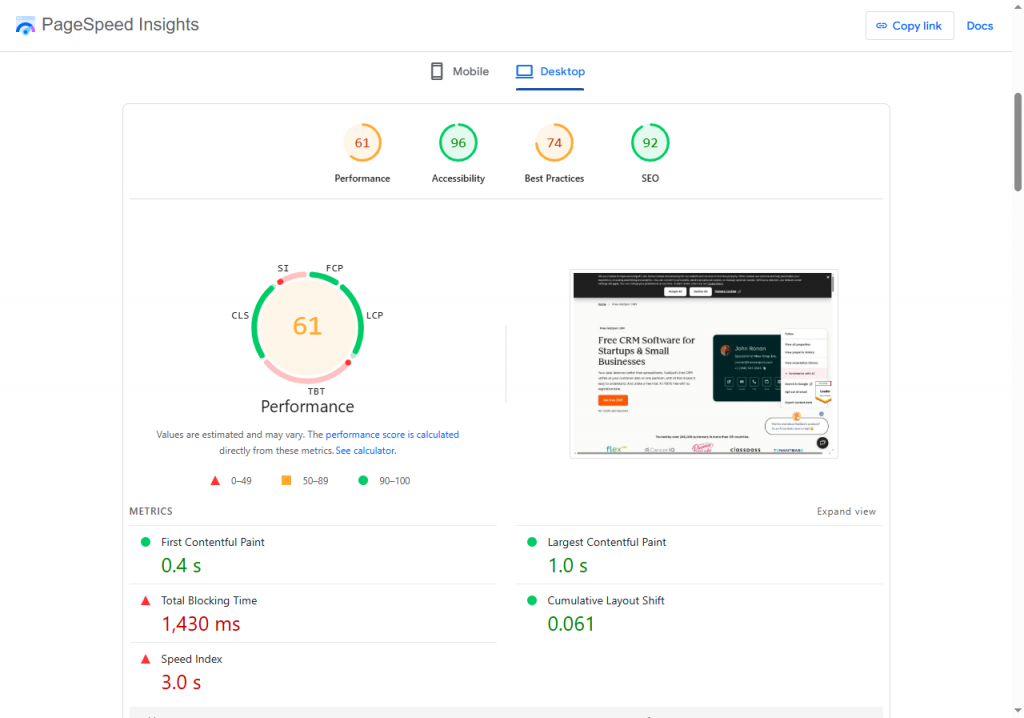
Website speed directly affects your rankings and conversions. Slow sites lose visitors before they even load. Google uses site speed as a ranking factor, especially for mobile searches.
53% of mobile users abandon sites that take over three seconds to load. For plumbers, this means lost emergency calls and service requests.
Test your site speed with these free tools:
These tools identify specific problems slowing your site down. They also provide actionable recommendations for fixes.
Common speed issues and solutions:
Mobile optimization is non-negotiable. Over 60% of plumbing searches happen on mobile devices. Google uses mobile-first indexing. This means it primarily uses your mobile site for ranking.
Test your mobile experience using Google’s Mobile-Friendly Test tool. Your site must be responsive and adapt to different screen sizes.
Mobile optimization checklist:
Make your phone number a click-to-call link. Mobile users should tap your number and immediately dial. This removes friction from the conversion process.
Simplify your mobile menu. Desktop menus often don’t translate well to mobile. Create a streamlined mobile menu with essential pages only.
Backlinks from other websites signal authority to search engines. Local plumber backlinks are especially valuable. They demonstrate community connections and geographic relevance.
Quality matters more than quantity. One link from a respected local organization beats dozens of low-quality links. Focus on relevant, local link opportunities.
Examples include:
Write guest posts for local home improvement blogs. Share seasonal maintenance tips or common problem solutions. Include a link back to your site in your author bio.
Track your backlink profile using tools like Ahrefs or SEMrush. Monitor new links and identify opportunities your competitors have. Disavow spammy links that could harm your profile.
You can’t improve what you don’t measure. Plumber SEO tracking shows what’s working and what needs adjustment. Set up proper tracking from day one.
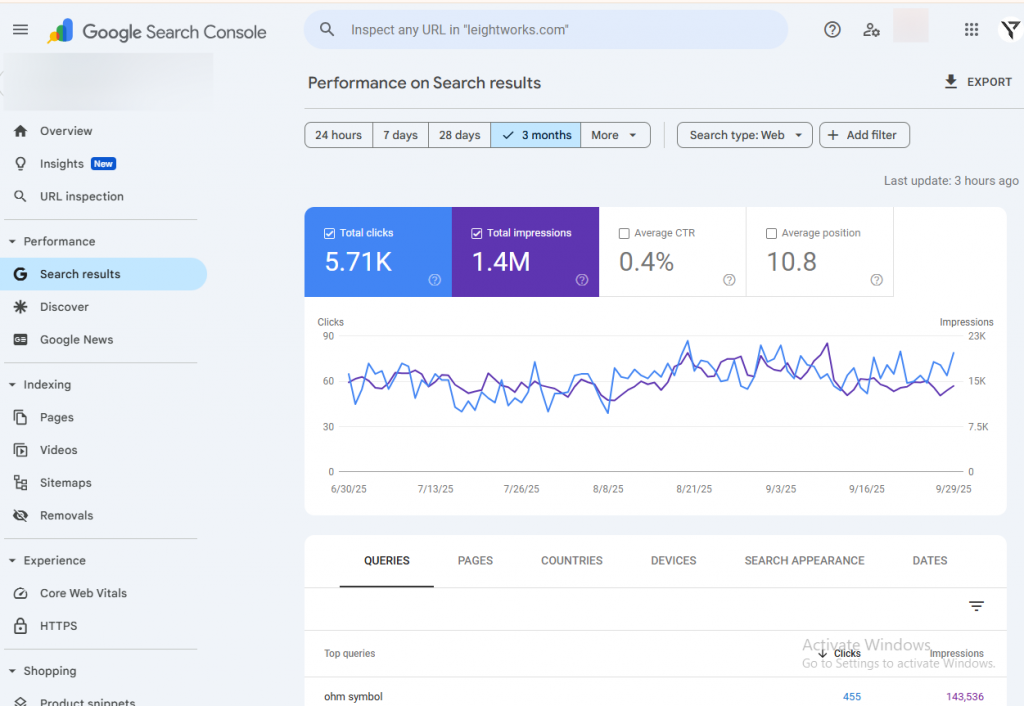
Google Search Console is your direct line to Google. It shows how Google sees your website. This free tool is essential for SEO tracking.
Key metrics to monitor:
Check the Coverage report weekly. It shows indexing errors and issues preventing pages from appearing in search. Fix errors immediately to maintain visibility.
Submit your sitemap in Search Console. This helps Google discover all your pages. Update your sitemap when adding new pages.
Google Analytics 4 tracks visitor behavior on your site. It shows where traffic comes from and what actions visitors take.
Google Analytics setup should track these key metrics:
Set up goal tracking for business outcomes. Track phone clicks, contact form submissions, and booking requests. This connects SEO efforts to actual business results.
Create custom dashboards showing your most important metrics. Check your dashboard weekly to spot trends early.

For advanced conversion tracking, CausalFunnel’s DeepID Attribution ensures accurate measurement across multiple channels, even with cookie restrictions.
Focus on metrics that directly impact your business. Track:
Review these metrics monthly. Look for trends rather than daily fluctuations. Make data-driven decisions about where to focus efforts.
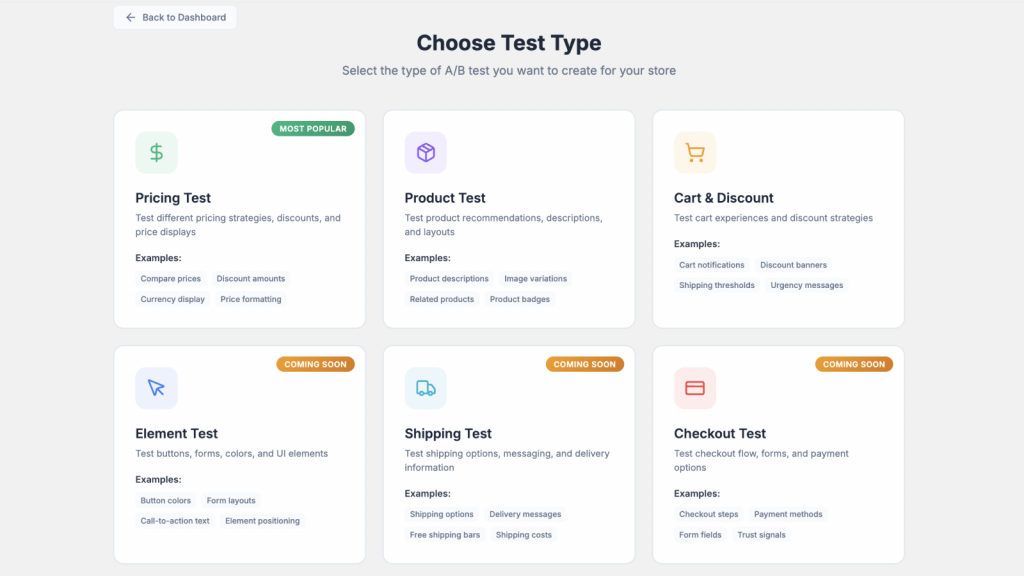
To optimize campaigns further, CausalFunnel’s A/B Testing can automate variant testing to identify high-performing strategies.
To grow your business, read this guide on: Digital Marketing for Plumbers
Even experienced plumbing business owners make plumber SEO mistakes that hurt their rankings. Avoiding these errors saves time and protects your visibility.
Local SEO for plumbers isn’t complicated, but it does require consistent effort. Your competitors are investing in their online presence right now. Every day you delay is another day of lost leads and revenue.
Start with your Google Business Profile. Optimize it completely and maintain it regularly. This single action delivers the fastest results. Then work through the other steps systematically.
Remember that SEO is ongoing, not a one-time project. Search algorithms evolve, and competitors adapt. Stay committed to improvement and tracking results.
The plumbing businesses that dominate local search didn’t get there by accident. They followed proven strategies and stayed consistent. Your service area has customers searching right now for the exact services you provide.
Whether you handle SEO yourself or work with a local plumber SEO agency, the important thing is starting today. Implement these strategies and watch your visibility grow. More rankings mean more calls, more jobs, and more revenue for your plumbing business.
Take action now. Optimize your Google Business Profile this week. Request reviews from recent customers. Start building those local citations. Your future customers are searching. Make sure they find you first.
Local SEO for plumbers is the process of optimizing your online presence to appear in local search results. It focuses on Google Business Profile optimization, local citations, reviews, and location-specific website content. The goal is to rank higher when potential customers search for plumbing services in your area.
Most plumbing businesses see initial improvements in 3-4 months. Significant ranking improvements typically take 6-12 months. The timeline depends on your current website status, competition level, and implementation consistency. SEO is ongoing, not a one-time project.
Hiring a local plumber SEO agency makes sense if you lack time or expertise. A specialized agency understands the plumbing industry SEO and local search factors. They can accelerate results and avoid costly mistakes. However, basic optimization tasks are manageable in-house with proper guidance.
The best keywords combine your services with location modifiers. Examples include "emergency plumber [city]," "[city] drain cleaning," and "water heater repair near me." Long-tail keywords like "24 hour plumber [neighborhood]" often convert better despite lower search volume.
Reviews are critically important for both rankings and conversions. Google considers review quantity, quality, rating, and recency as ranking factors. Reviews also heavily influence customer decisions. Businesses with higher ratings get more clicks and calls from search results.
You can handle basic local SEO for home service companies yourself with time and learning. Tasks like optimizing your Google Business Profile and requesting reviews are straightforward. However, technical SEO and competitive markets may benefit from professional help.
SEO builds long-term visibility organically without ongoing costs per click. Paid ads deliver immediate results but stop when you stop paying. SEO requires upfront effort but provides lasting value. Most successful plumbers use both strategies together.
Create individual location pages for each city you serve. Include unique content mentioning local landmarks and area-specific problems. Update your Google Business Profile service area. Build citations in each local directory. Local marketing for plumbers requires dedicated pages, not just lists.
Empowering businesses to optimize their conversion funnels with AI-driven insights and automation. Turn traffic into sales with our advanced attribution platform.



